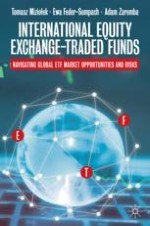2020 | OriginalPaper | Chapter
4. The Operation and Microstructure of Exchange-Traded Funds
Authors : Tomasz Miziołek, Ewa Feder-Sempach, Adam Zaremba
Published in: International Equity Exchange-Traded Funds
Publisher: Springer International Publishing
Activate our intelligent search to find suitable subject content or patents.
Select sections of text to find matching patents with Artificial Intelligence. powered by
Select sections of text to find additional relevant content using AI-assisted search. powered by
